Are the Andaman & Nicobar Islands Coral Reefs?
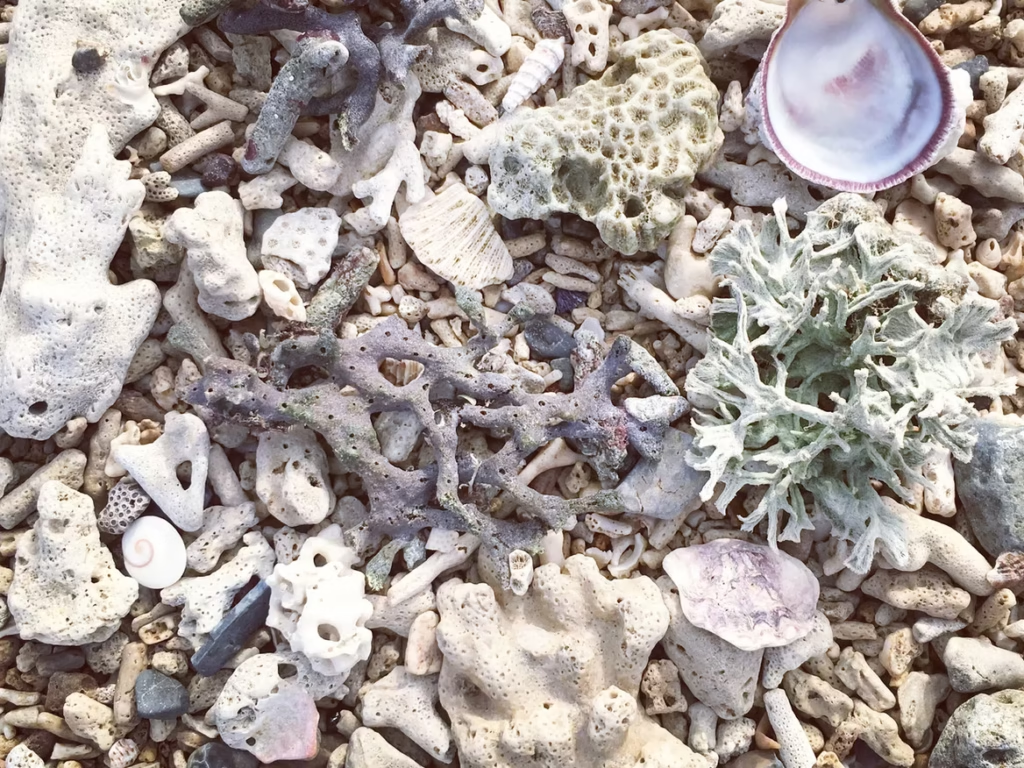
When people think of the Andaman and Nicobar Islands, they think of blue water, tropical forest, and colorful marine life. But there is one question – are the Andaman and Nicobar Islands coral islands? The answer is yes and no. The Andaman and Nicobar Islands – unlike the Lakshadweep Islands that are all coral atolls – are mainly volcanic. Indeed, they have wonderful coral reefs in Andaman Nicobar surrounding them.In this guide, we will share geological facts, show you where there may be colorful coral diversity in Andaman, the other coral islands, available snorkeling and diving, and the need to conserve. If you are organizing your Andaman adventure, plan with The Tarzan Way, which is an AI-based personalized travel planner that will develop itineraries based on your interests in coral island visits, diving trips, and eco travel. Geological Background of Andaman & Nicobar The formation of these islands started almost 88 million years ago. Large-scale tectonic plate generation led to the Indian Ocean’s formation. The Andaman and Nicobar Islands resulted from volcanic activity and the subduction zone of the Indian Plate and the Burmese Plate. This is the reason that most of the archipelago is rocky instead of built from coral. However, these volcanic origins created perfect conditions for corals to develop over the millennia allowing the rich coral reefs that are now seen in the Andaman Nicobar. If you’re fascinated by the ancient past, check out our blog How Were Andaman and Nicobar Islands Formed? to dive deeper into the geological processes that shaped these islands. Are They Really Coral Islands? Are the Andaman Islands coral islands? The answer is: not entirely. The Lakshadweep Islands are coral atolls made entirely of reef growth, while the Andaman Islands are volcanic islands with fringing coral reefs surrounding them. There are some smaller islands, specifically those around North Bay, Neil, and Havelock, that people often refer to as Andaman coral islands, as their beaches and lagoons have been heavily shaped by corals. However, strictly speaking, not every Andaman island was made from coral. This unique combination of volcanic core and coral periphery is part of what makes the archipelago so unique. Visitors get to experience dramatic cliffs and dense forests inland and clear waters with beautiful coral gardens off the coast. Coral Diversity and Marine Life The coral diversity in the Andaman region is one of India’s richest. We have documented over 200 species of hard and soft corals, from large brain corals to small branching staghorns. These reefs provide habitat for: Colorful reef fishes such as parrotfish, clownfish, and butterflyfish; Sea turtles that feed on sea grass near coral lagoons; Mollusks, rays, and reef sharks that inhabit the deeper reef edges. The coral ecosystems at Andaman Nicobar have so much life that divers often refer to them as “underwater cities,” full of life and color. For a more immersive look at marine biodiversity, explore our blog Andaman and Nicobar Islands: Diving into Underwater Wonders. Best Coral Islands in Andaman If you’re dreaming of snorkeling or diving into coral-rich waters, here are the best coral islands in Andaman worth visiting: North Bay Island – Known for glass-bottom boat rides, snorkeling, and close-to-shore coral reefs. Havelock Island (Swaraj Dweep) – Home to Elephant Beach, one of the best spots for vibrant coral snorkneling. Neil Island (Shaheed Dweep) – Famous for shallow reefs teeming with colorful fish. Cinque Islands – Often called “the twin islands,” offering untouched coral beauty. Red Skin Island – Part of Mahatma Gandhi Marine National Park, ideal for beginners to see corals up close. Each of these Andaman coral islands offers a different shade of underwater beauty, making them perfect for eco-travelers and adventure seekers alike. Activities: Snorkeling, Diving & Glass-Bottom Rides Experiencing coral reefs is not limited to professional divers. The islands offer something for everyone: Snorkeling coral Andaman: Popular at Elephant Beach and North Bay Island, suitable even for beginners. Scuba diving: Havelock, Neil, and Cinque Islands offer world-class dive schools with certified instructors. Glass-bottom boat rides: Perfect for non-swimmers who still want to marvel at reefs without getting wet. These activities not only allow travelers to explore coral reefs in Andaman Nicobar but also provide sustainable ways to enjoy marine life when done with eco-certified operators. Importance of Coral Ecosystems What is the importance of these reefs? The coral ecology in Andaman is critical to: Protecting shorelines from erosion by buffering waves Acting as nurseries for marine life and fish Supporting local livelihoods through fishing and tourism Contributing to global biodiversity hotspots The ecological balance of the islands would collapse without coral reefs, so we need to work to conserve coral reefs in Andaman. Threats to Coral Reefs in Andaman Sadly, the reefs face challenges from multiple sources: Climate change & bleaching: Coral bleaching events have increased over the last number of years because sea temperatures are warming. Pollution: The health of the reef is affected by the presence of plastic and sewage. Tourism pressure: Irresponsible and poor tourist behavior such as snorkelers kicking up sand, boats anchoring in a bad manner, and touching coral are impacting fragile reefs. Coastal development: the building of resorts and construction near beach fronts is damaging ecosystems. All of these aspects can directly or indirectly threaten coral reefs in Andaman, so it is imperative travelers and sport fishing and all authorities act in a responsible manner. Conservation Efforts in Andaman Coral Islands There are ongoing initiatives to safeguard the Andaman coral islands: marine protected areas like Mahatma Gandhi Marine National Park and Rani Jhansi Marine National Park. Project aimed at transplanting coral and restoration of damaged reef areas. Government regulation which limits tourism to sensitive areas. NGOs working to promote awareness of what constitutes sustainable tourism. Choosing eco-responsible activities while on your trip or visit, will help support initiatives that conserve the coral reefs in Andaman. Eco-Friendly Travel Tips for Visitors If you want to explore these reefs responsibly, keep these tips in mind: Never touch or step on corals—they
Vaishno Devi Travel Guide 2025: Cost, Itinerary, Tips & How to Plan Your Yatra
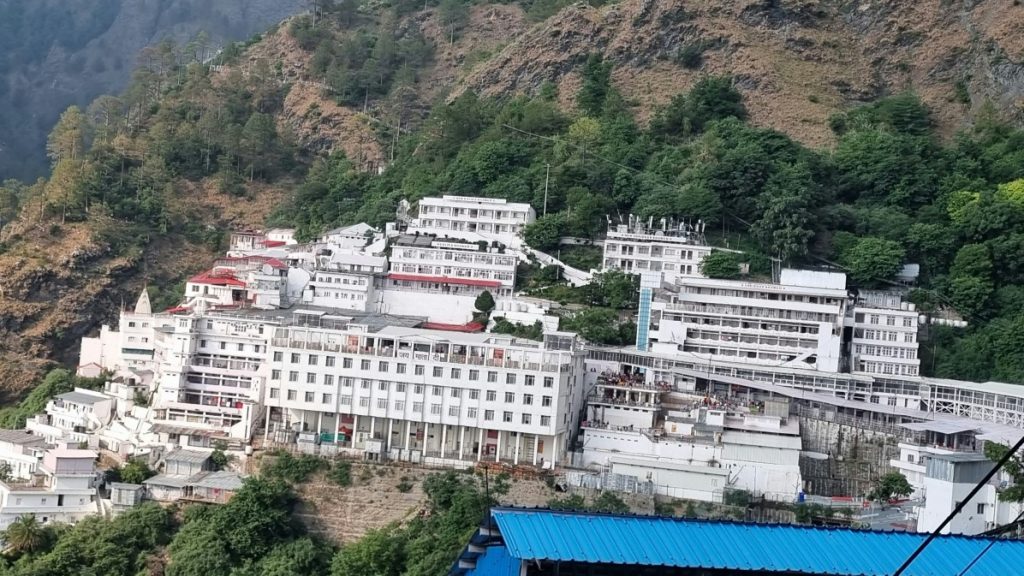
What’s in this Blog Why Vaishno Devi is a Must-Visit Pilgrimage How to Reach Vaishno Devi Best Time to Visit Vaishno Devi Yatra Registration & Permits Trip Cost & Budgeting Where to Stay (Katra & Nearby) Itinerary Suggestions – 2-Day and 3-Day Trip Plans Helicopter, Pony & Porter Services Things to Carry & Travel Tips Nearby Places to Visit FAQs Final Thoughts Why Vaishno Devi is a Must-Visit Pilgrimage Going to Vaishno Devi in 2025 is more than just a religious pilgrimage. It’s an experience rich in Himalayan beauty, culture, and faith. Vaishno Devi, one of India’s holiest shrines, is tucked away in Jammu’s Trikuta Hills. In the eyes of pilgrims, Mata Vaishno Devi grants the desires of those who come with pure devotion. In addition to the spiritual aspect, the trip offers beautiful trekking routes, friendly locals, and the opportunity to discover hidden treasures. This vaishno devi travel guide includes all the necessary information for anyone planning a vaishno devi trip 2 days itinerary or vaishno devi trip 3 days itinerary. Pro Tip: For smoother planning, reserve your lodging and yatra registration at least two months in advance. How to Reach Vaishno Devi There are multiple transport options to reach Vaishno Devi : By Train: The closest significant train station is Jammu Tawi, which is 48 kilometers from Katra. It is connected to Delhi, Mumbai, and Kolkata by regular trains. By Flight: The closest significant airport is Jammu Airport, which is 50 km away. From there,buses and taxis are too frequently available to travel to Katra . By Road: As Katra has brilliant road connections to Srinagar, Udhampur, and Jammu to travel by road. There are plenty of deluxe buses and taxis too. The actual yatra starts with a 13-kilometer trek to the Bhawan (shrine) from Katra. Pilgrims have three options: walk, rent ponies, or take a helicopter. Pro Tip: To prevent travel fatigue before beginning the trek, get to Katra one day early. Best Time to Visit Vaishno Devi Although the shrine is open all year, there are special experiences to be had in different seasons: Spring (March–May): Beautiful scenery and pleasant weather. Monsoon (July–September):Fewer tourists, but be cautious of landslides. Autumn (October–November):Clear skies and joyous occasions like Navratri. Winter (December–February):snow-covered pathways, fewer tourists, and serene darshan. Pro Tip: Plan during Navratri, but make reservations well in advance, if you want a festive atmosphere. Yatra Registration & Permits Before beginning the yatra, each pilgrim is required to complete the Vaishno Devi online registration. Registering is free and can be done at Katra counters or on the official Shrine Board website. A yatra slip is mandatory at checkpoints. Rules to follow: Carry a valid ID proof. Children under the age of five are not required to register. Refrain from bringing big bags or prohibited items. Pro Tip: For easy passes and updates, download the “Mata Vaishno Devi Yatra Registration” mobile app. Trip Cost & Budgeting The Vaishno Devi trip cost is determined by the services, travel, and lodging selected: Transport (Delhi to Katra): ₹1,500–₹3,000 by train, ₹3,500–₹6,000 by flight. Stay in Katra: The cost of under-budget dharamshalas will be in the range of ₹500–₹1,000 and mid-range hotels is of ₹1,500–₹3,000. Food: The per day price of simple vegetarian meals is of around ₹300–₹600. Helicopter Ride: The estimated cost of helicopter’s one way ride is ₹1,840 per person. Other Expenses: Ponies, palanquins, or porters cost extra. While a comfortable trip may cost ₹12,000 to ₹15,000, a more affordable trip can be planned for ₹6,000 to ₹8,000 per person. Pro Tip: To reduce the cost of food while trekking, bring snacks and reusable water bottles. Where to Stay (Katra & Nearby) There are many different lodging options in Katra: For Pilgrims: Dharamshalas run by trusts and guesthouses near the shrine. For Families: There are under budget accommodations with shuttle services. Vegetarian dining options are too available. For Comfort Seekers: Premium hotels offering mountain views and spa treatments. Pro Tip: To save time ,its better to choose a hotel near the yatra registration counter. Itinerary Suggestions – 2-Day and 3-Day Trip Plans 2-Day Vaishno Devi Itinerary Day 1: Get to Katra, register, and begin the hike that evening. Arrive at Bhawan Darshan at night. Day 2: Go back to Katra in the morning, check out the local marketplace, and then leave for Jammu. 3-Day Vaishno Devi Travel Planner Day 1: Arrive in Katra, relax, and visit neighboring temples. Day 2: Trekking begins early in the morning, with a visit to Bhairon Temple and darshan at Bhawan. Day 3: Before departing, return to Katra and explore Patnitop or Shiv Khori. Pro Tip: Add an extra day if you want to comfortably visit neighboring attractions. Helicopter, Pony & Porter Services Helicopter: For the vaishno devi helicopter booking, use the Shrine Board website to make an online reservation. It takes eight minutes to travel from Katra to Sanjichhat. Ponies & Palanquins: For those who are unable to trek, it is available from Katra. Porters: During the yatra, assist with carrying children or luggage. Although prices vary, in order to prevent overcharging, payments must be made at authorized counters. Pro Tip: Because spots fill up quickly, reserve helicopter rides 60 days in advance. Things to Carry & Travel Tips Light woolens or jackets depending on the season. Comfortable walking shoes. Painkillers, prescription medications, and a first aid kit. For night trekking,Torchlight or headlamp is must to carry. Energy bars and dry fruits for endurance. Pro Tip: Since plastic bags are prohibited near Katra and the shrine, don’t bring them. Nearby Places to Visit After your darshan, if you have time, then check out these attractive places to visit near vaishno devi: Patnitop: A hill station featuring adventure sports and meadows. Shiv Khori: A cave shrine dedicated to Lord Shiva. Jhajjar Kotli: It has a beautiful picturesque riverside picnic area. Bahu Fort, Jammu: It’s a historic fort featuring a Kali temple. Pro Tip: Add an extra day to your itinerary so that you can visit Shiv
Goa Beyond Beaches: Explore Culture, Heritage & Local Life
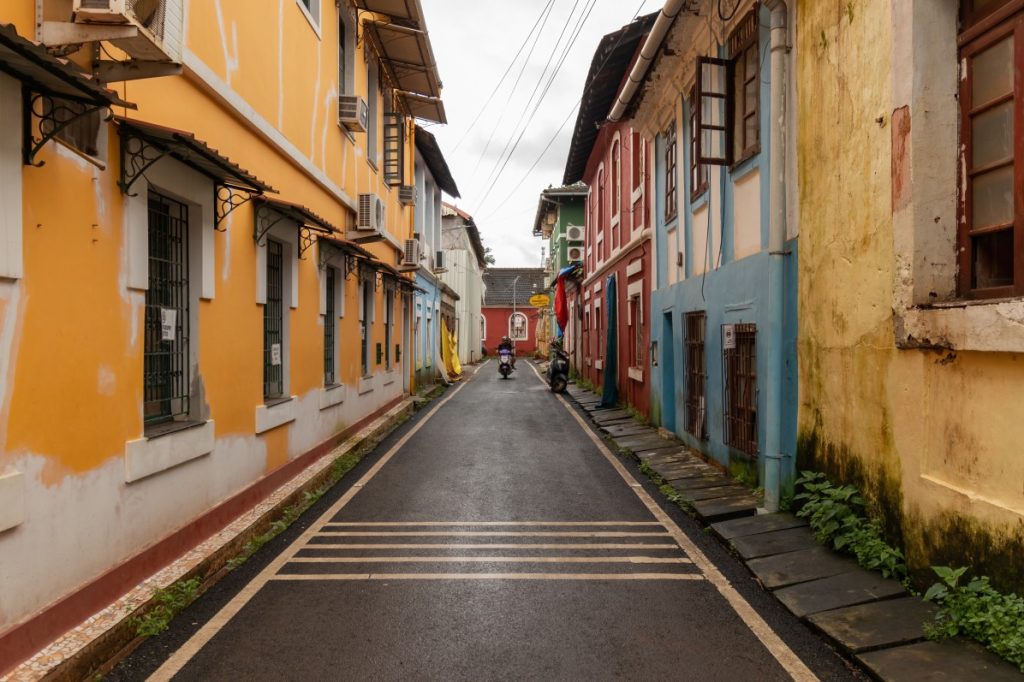
When you think of Goa, the first thing that probably comes to mind is sandy beaches, sun-drenched parties, and exciting nightlife. However, Goa is a lot more than that, blending together all of its Portuguese influence, its ancient temples, colorful festivals, and secret traditions to give travelers a real experience that is much fuller and more enriching. In this blog, we will take you to Goa beyond beaches – through its cultural roots, historical sites, heritage villages, art, culinary offerings, music, and festivals. And for everyone, whether you love history, enjoy cultural trips, or are just looking for another side of Goa, this blog will help you with your trip. We have made it simple for you to plan your trip by providing you with a helpful AI powered personalized travel planner, The Tarzan Way, which curates experiences just for you. What’s in this Blog Goa’s Unique Cultural Identity Portuguese & Colonial Heritage Temples, Churches & Spiritual Landmarks Goan Festivals & Celebrations Heritage Villages & Old Goa Charm Art, Music & Local Traditions Food & Culinary Heritage Museums & Historical Landmarks Suggested Itinerary: Goa Beyond Beaches Things to Remember Before You Go FAQs Final Thoughts Goa’s Unique Cultural Identity Goa is frequently described as the crossroads of the East and the West. Its Portuguese colonial history has resulted in breathtaking architecture, food that is a fusion of European and Indian, and cultural traditions, making it a hub for Goa cultural experiences. Goa feels distinct from other places in India because it has a unique mix of relaxed village life alongside lively cosmopolitan culture. Portuguese & Colonial Heritage Goa was ruled by the Portuguese for over 450 years. Their strong impact can be seen everywhere within the space of Goa, from churches in the Baroque-style to colonial mansions with ports and pillars. The Goa heritage sites are intact and respectfully maintained. Basilica of Bom Jesus: This site is a UNESCO World Heritage Site and houses the mortal remains of St. Francis Xavier. Se Cathedral: Recognized for its golden bell and stunning Portuguese architecture Goa. Fontainhas (Latin Quarter, Panjim): A lively neighborhood boasting Portuguese-style houses, numerous balconies, and narrow lanes in-between. Heritage Mansions: The Palácio do Deão and Braganza House represent Indo-Portuguese architecture. For hidden experiences near beaches, read: Best Hidden Beaches in Goa for Peaceful Escape. Temples, Churches & Spiritual Landmarks In addition to the spectacular churches, Goa has ancient Hindu temples, showcasing the spiritual blend in all its richness. Mangeshi Temple: This temple is dedicated to Lord Shiva and has an impressive entrance and a lamp tower with seven stories. Shantadurga Temple: A peaceful temple complex located in Ponda. The Church of St. Cajetan: This church is constructed in the image of St. Peter’s Basilica in Rome. The combination of Hindu and Christian worship sites illustrate Goa religious sites and the state’s unique cultural faith and coexistence. Goan Festivals & Celebrations Goa festivals are not just events – they are vibrant cultural showcases. Carnival (February): A Portuguese legacy with parades, dances, and music. Sao Joao (June): Celebrated with water games and vibrant rituals. Shigmo (March): A Hindu spring festival with folk dances and colorful parades. Christmas & New Year: The most vibrant season with midnight masses, street lights, and festivities. If you love festivals, check out Goa Bliss: AI-Guided Wellness Retreats for holistic cultural experiences. Heritage Villages & Old Goa Charm If you want to truly experience Goa’s heart, step away from the beaches and explore Goa’s heritage village life. Chandor: Known for Portuguese mansions and heritage homes. Loutolim: A quaint village with colonial homes and the Big Foot Museum. Old Goa: A UNESCO site with historic churches and museums. Saligao & Siolim: Villages that preserve Goan rural lifestyle with scenic charm. Art, Music & Local Traditions Goa is the hub of creativity – art and music flow in Goa’s culture. Goan Folk Music: Mando and Fado are traditional Goan musical styles. Goa Chitra Museum: Displays traditional farming tools and Goan heritage. Kala Academy: A cultural hub hosting exhibitions and performances. Local Dance Forms: Fugdi, Dhalo, and Dekhni depict Goan traditions. Music lovers should not miss Goa’s Nightlife: A Guide to the Lit Nightlife for a modern contrast. Food & Culinary Heritage Goan food & cuisine is a cultural experience in itself – blending Konkani, Portuguese, and coastal flavors. Signature Dishes: Vindaloo, Xacuti, Bebinca (dessert), Sorpotel, and Sannas. Seafood: Fresh fish curries and prawn balchao. Markets: Mapusa and Panjim markets for spices and local snacks. Feni: A local cashew liquor that’s part of Goa’s cultural identity. Foodies should read Top Restaurants in Goa and Gokarna for dining recommendations. Museums & Historical Landmarks Some of Goa’s cultural treasures are preserved in its museums: Goa State Museum: Documents Goan history, art, and culture. Naval Aviation Museum: India’s only museum dedicated to naval aviation. Big Foot Museum, Loutolim: Depicts rural Goan life and legends. Suggested Itinerary: Goa Beyond Beaches Day 1: Explore Old Goa – Basilica of Bom Jesus, Se Cathedral, St. Augustine ruins. Day 2: Explore Panjim – Fontainhas walk, local markets, art galleries. Day 3: Go for heritage villages like Chandor & Loutolim, Big Foot Museum. Day 4: Have the cultural experiences – attend a folk performance, cooking class, or Fado night. Day 5: Explore local cuisine, museums, and end with a wellness retreat. Planning a longer trip? Read: Top Attractions to Include in Your Goa Travel Itinerary and South Goa Unplugged: Exploring the Quieter Side. Things to Remember Before You Go Dress modestly when visiting temples and churches. Carry cash, especially in rural heritage villages. Hire local guides for deeper cultural insights. Respect traditions and ask permission before photographing locals. Use The Tarzan Way for curated heritage tours and AI-powered trip planning. FAQs Q. What is special about Goa? Goa is special for its mix of beaches, Portuguese heritage, vibrant festivals, and rich food culture. Q. What is special in Goa for girls? Shopping in flea markets, wellness retreats, yoga, and safe nightlife options make Goa appealing for girls.
Discover Kerala: Cultural Festivals & Food Experiences You Can’t Miss
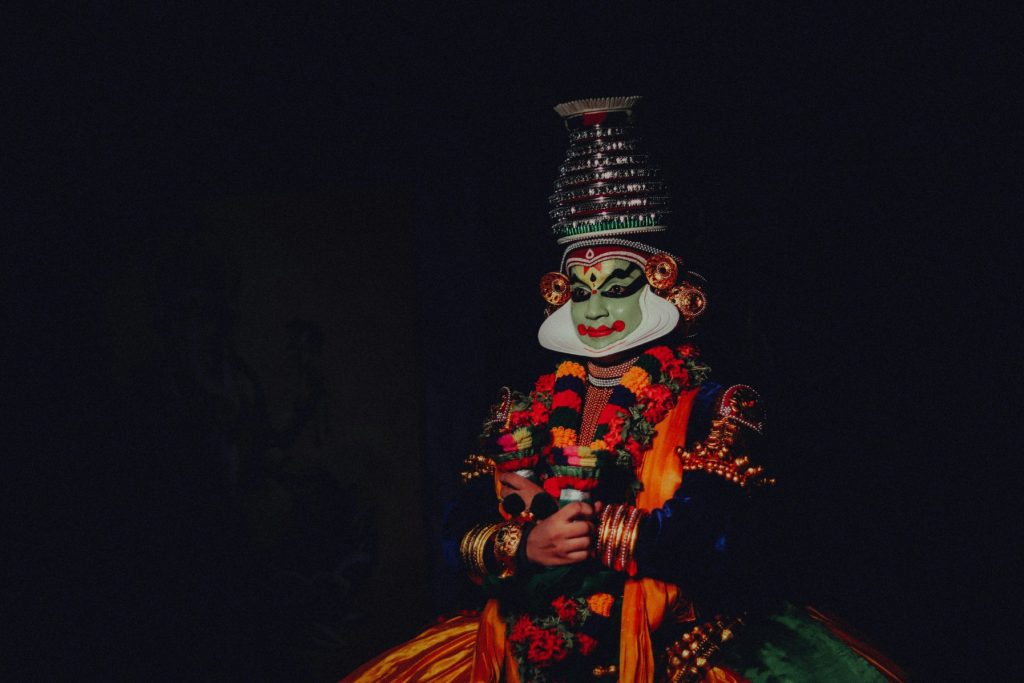
Kerala, also known as “God’s Own Country,” has more to offer than simply just hill stations and backwaters. Kerala has so many cultural treasures that it can be overwhelming to plan a trip. You can uncover the genuine essence of Kerala with the aid of a well-designed Kerala travel planner or itinerary. From stunning temple festivals to delectable cuisine, each area of Kerala offers a distinctive experience. Embracing the local culture makes your Kerala vacation special, whether you’re selecting Kerala tour packages, a Kerala family tour, or even a Kerala honeymoon tour package. 1. Harvest Festivals of the Hills – Wayanad & Idukki While Onam is a state-wide celebration, hill regions like Wayanad and Idukki have their own localized harvest festivals. Tribal communities celebrate the harvest with music, food sharing, and rituals that are unique to the high ranges. Unique Highlight: Traditional cooking in earthen pots, bamboo rice dishes, and herbal drinks. Pro Tip: Visit with a guide who knows the area and can connect you with tribal communities for responsible tourism experiences. 2. Onam – The Festival of Harvest Onam is Kerala’s most famous festival. It honors the harvest season and the legendary King Mahabali. Over 25 vegetarian dishes are served on banana leaves during the lavish feast known as Onam Sadya. The celebration is also highlighted by traditional games, floral carpets, and the well-known boat races. Unique Highlight: One of Kerala’s most colorful events is the Vallam Kali, or snake boat race. Pro Tip: If you plan to visit Kerala during Onam, reserve your trip packages in advance. Local homestays provide the most authentic experience. 3. Aranmula Boat Race – Culture Meets Community Held during Onam, the Aranmula Uthrattathi Boat Race is a spiritual and cultural event, unlike the competitive races elsewhere. Here, the oarsmen sing devotional songs in rhythm while rowing the snake boats in ceremonial fashion. Unique Highlight: The boats are decorated with silk umbrellas and golden embellishments, and the event is more about tradition than competition. Pro Tip: Visit the nearby Aranmula Parthasarathy Temple for a complete cultural experience. 4. Thrissur Pooram – The Festival of Elephants A musical and visual extravaganza is Thrissur Pooram. With golden decorations, majestic elephants parade. An electrifying atmosphere is produced by the rhythmic beats of traditional percussion. Unique Highlight: The fireworks display is unmatched and continues late into the night. Pro Tip: If you are sensitive to loud noises, keep earplugs with you. For convenient access, stay close to the main temple grounds. 5. Theyyam – Dance of the Divine The ritual art form known as “theyyam” is exclusive to North Kerala. Dancers in colorful costumes and elaborate makeup transform into deities during performances. It is both spiritual and artistic. If you’re keen on sustainable tourism in Kerala, attending a village Theyyam is a great way to support local heritage and community-led rituals. Unique Highlight: Witnessing Theyyam in a village shrine provides a genuine, unadulterated Kerala tour guide experience. Pro Tip: For the most impactful performances, attend ceremonies in the early morning or late at night. 6. Vishu – Kerala’s New Year Celebrated in April, Vishu marks the beginning of the new year in the Malayalam calendar. Families set up a Vishukkani—an arrangement of rice, fruits, golden items, and lamps—to be the first thing one sees in the morning. It’s followed by firecrackers, new clothes, and a grand feast. Unique Highlight: The Vishu Sadhya, a festive vegetarian meal, and the tradition of giving money (Vishu Kaineettam) to children. Pro Tip: Visit temples like Sree Padmanabhaswamy during Vishu for elaborate rituals and decorations. 7. Sadya – A Traditional Vegetarian Feast A trip to Kerala would not be complete without taking in Sadya. Sambar, avial, olan, thoran, rice, and desserts like payasam are all part of this elaborate vegetarian meal. It displays the diversity of Keralan cuisine. Planning your trip during festival season? That’s one of the smartest tips and tricks for planning your ultimate Kerala trip—as Sadya is best enjoyed in local homes or temples. Unique Highlight: Each dish balances taste, health, and tradition, offering a wholesome Kerala travel planner experience. Pro Tip: Try Sadya during festivals or weddings. Ask local Kerala tour operators for restaurant recommendations offering authentic flavors. 8. Palada Payasam and Kerala Desserts Kerala’s desserts are a class apart. Palada Payasam, made with rice ada, milk, and sugar, is often served as the grand finale of a Sadya. Other favorites include parippu pradhaman (lentil dessert), unniyappam (rice fritters), and achappam (rose cookies). Unique Highlight: Most desserts are made with jaggery and coconut, offering a healthy twist. Pro Tip: Try temple prasadam versions of payasam, which are considered more authentic and divine. 9. Malabar Biryani – A Royal Treat Kerala’s pride lies in its Malabar Biryani. Tender meat, spices, and fragrant rice combine to create a dish that will never be forgotten. Malappuram and Kozhikode are well-known. Unique Highlight: Malabar Biryani is a family-friendly dish because it is lighter and less greasy than other biryanis. Pro Tip: For the best taste, choose local restaurants rather than tourist ones. Inquire with travel agents about the best places that offer kerala authentic flavors. 10. Toddy and Seafood Delicacies Kerala’s seafood is flavorful and fresh. Must-try dishes include prawn roast, karimeen pollichathu, and fish curry. These dishes go well with toddy, a traditional fermented coconut beverage. Unique Highlight: Seafood prepared with unique spice blends is available in Kerala’s coastal towns. Pro Tip: Enjoy toddy in licensed shops only. Pair it with spicy seafood for a better experience. Seasonal Travel Hook Timing your trip right can elevate your Kerala experience. Festivals in Kerala are deeply tied to specific months, so aligning your visit with these cultural events adds magic to your journey. Visiting in April? Don’t miss Thrissur Pooram, Kerala’s grandest temple festival filled with fireworks, decorated elephants, and traditional music. Traveling in August or September? Plan your trip around Onam for the iconic Sadya feast, Vallam Kali boat races, and vibrant flower carpets. Exploring in December to February? It’s Theyyam
How to Volunteer in Rural Kerala and Make an Impact
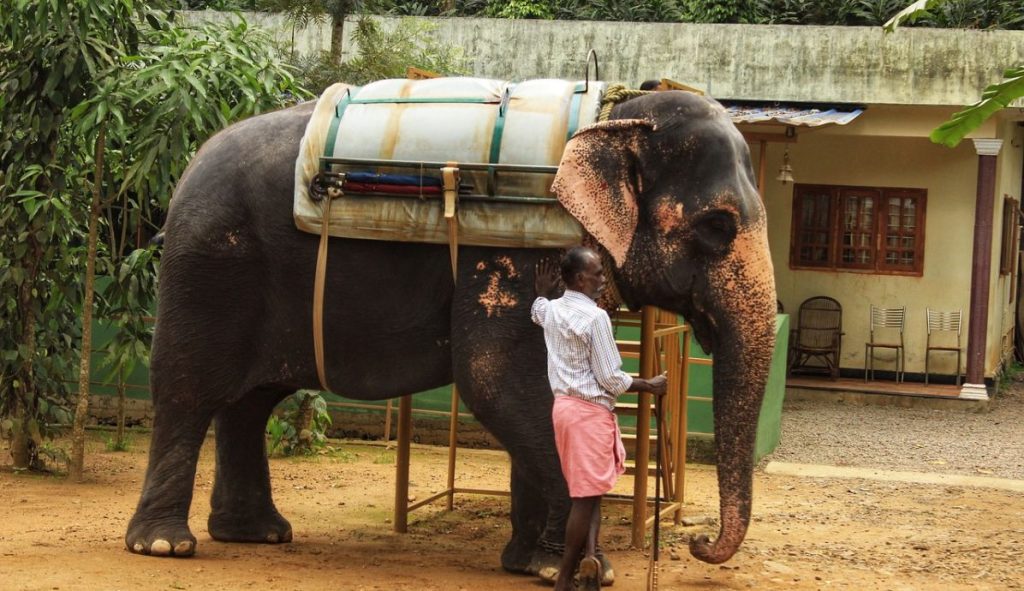
When most people think of Kerala, they imagine houseboats on backwaters or tea gardens on misty hills. But Kerala’s real charm lies in its villages — where culture, traditions, and warm hospitality create unforgettable experiences. Volunteering in rural Kerala not only enriches your trip but also makes a meaningful difference in local lives. This guide will help you make your Kerala itinerary memorable & meaningful for life. 1. Why to Choose Rural Kerala for Volunteering? Volunteering in Kerala’s rural areas gives visitors an opportunity to experience the state apart from experiencing populated tourist locations. The villages offer authentic culture & traditions, friendly hospitality by locals, and untold tales. Volunteering gives you authentic village experiences by immersing you in daily life, unlike traditional Kerala packages. There are multiple ways to contribute—teaching children, supporting women’s groups, or helping in eco-projects. The community is strengthened by each and every action, no matter how big or small it is. Pro Tip: Before you enroll, it is advised to better look for reputable Kerala tour companies or regional NGOs that run such volunteer events. 2. Top Volunteering Opportunities in Rural Kerala (Teaching, Farming, Healthcare & More) There are numerous volunteer opportunities available in Kerala. Amongst all, the most significant opportunities are as follows: Teaching Programs: To support educational initiatives, volunteering to teach computer skills, English or any other subjects in schools is one way to volunteer for the right cause. Sustainable Farming: Encourage organic & sustainable farming projects over inorganic farming in the hill stations of Kerala. Support for Healthcare: To volunteer for the healthcare department, reach out to remote clinics. Help out local medical staff . Eco-Tourism Projects: Support sustainable tourism activities. Encourage eco-friendly responsible travel & sustainable tourism in villages. These kinds of opportunities, which combine leisure and purpose, are trip-worthy to be included in your customized Kerala travel packages. Pro Tip: Select projects as per your preferred skills. There are a lot of activities to be indulged in like from Teaching, farming, to healthcare—choose where you can truly add real value. 3. Best Places to Volunteer in Kerala: Wayanad, Alleppey, Munnar & Kumarakom Your preferred interests will determine the location for volunteering. Each and every region has something special to offer: Wayanad: It is known for its sustainable farming initiatives and for tribal communities that support sustainability.. Alleppey: It defines the combination of ecotourism run by the locals and beautiful backwaters. Munnar: Volunteer on tea plantations and organic farms in the hills. Kumarakom: This area is home to eco-friendly initiatives and bird sanctuaries. Each destination adds depth to your Kerala travel guide, making it more meaningful than a typical Kerala road trip. It has something or the other to experience & learn while volunteering at the same time. Pro Tip: Speak with your Kerala tour planner to mix volunteering with sightseeing for a balanced experience. 4. How to Plan Your Volunteer Trip To ensure a rewarding volunteer experience ,careful examination & better planning is what you all need .Here are some of the key steps that will add value to your volunteer trip, if followed: Decide your duration—whether you want to go for short-term or long-term. To make travel plans to Kerala, get in touch with travel agencies. To combine volunteering with travel, pick trustworthy & informative Kerala tour companies. Mentally get ready for simple authentic living and cultural differences. A reputable Kerala planner can create a fulfilling itinerary that incorporates impact exploration. Pro Tip: Keep a journal when you travel. Writing down your experiences fosters reflection and strengthens bonds with others 5. Unique Experiences To Experience While Volunteering In Kerala, volunteering is more about the reward that is to gain than it is to give back. Anticipate more on following activities that will add value to your volunteering tour : Take part in customary celebrations. During homestays, discover Keralan cuisine. Learn about Ayurvedic methods in rural areas. Hike to undiscovered waterfalls accompanied by locals. These immersive experiences turn your trip into lifelong unforgettable memories, in contrast to generic Kerala family tours or vacation packages with no volunteering . Pro Tip: Carry a travel journal. Documenting your experiences will deepen your connection and help you reflect all the memories to re-live the moment. 6. Balancing Travel and Volunteering altogether Many tourists are curious about how to combine volunteering and leisure time for a better trip. Integration is crucial. By combining volunteer work with touring Kerala’s hill stations, backwaters, and cultural sites ,you can make a significant contribution without missing out on famous locations. Volunteering days can be added to Kerala vacation packages. This guarantees that your Kerala vacation package combines enjoyment and purpose along with a lot of learning thoroughly. Pro Tip: Take advantage of the weekends to explore the destination. For the ideal balance, commit to volunteering during the week days. FAQs Q1. Does volunteering in Kerala require any prior experience? No. Beginners are welcome in many projects. More important than skill is enthusiasm and transparency. Q2. Is it possible to combine volunteering with a honeymoon tour package to Kerala? Indeed. It is definitely possible to add personalized volunteering along with a honeymoon tour package. Q3. How do I find reliable travel agents for Kerala trips for volunteering? Seek out authorized Kerala tour companies that collaborate with neighborhood associations or non-profits communities. Q4. Is volunteering in rural Kerala safe for solo travelers? Yes. Villages in Kerala are known for their hospitality and safety. Just stay connected with your Kerala tour guide. Q5. Can a quick Kerala vacation package include volunteering? Indeed. Volunteering for even two or three days can make your Kerala vacation impactful & memorable. Final Thoughts Your journey becomes more than just a vacation when you volunteer in rural Kerala. It’s a worthwhile opportunity to change lives, embrace customs, and come back with meaningful tales. Whether you are traveling by road, taking a family vacation, or using a Kerala tour operator, volunteering adds value to your trip that will last. If you want your Kerala volunteer journey filled
Hidden Beaches in Kerala You Won’t Find in Guidebooks
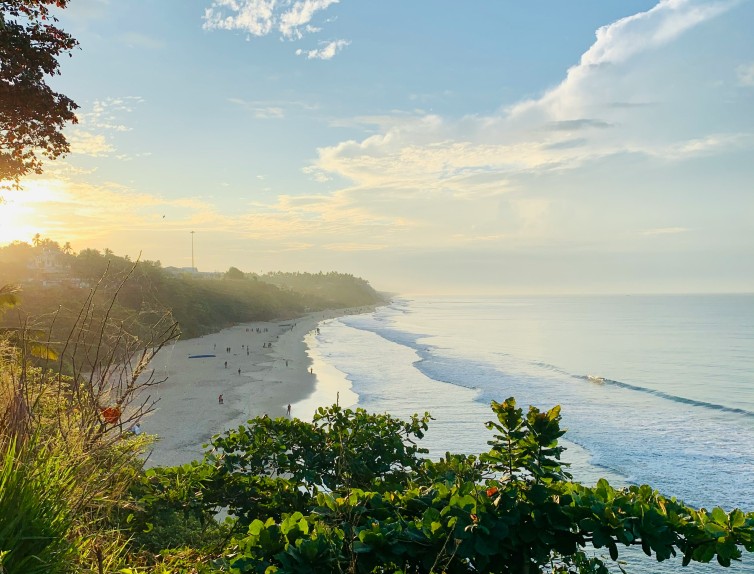
Sure, everyone talks about Kerala’s houseboats and those picture-perfect backwaters, but let’s be honest, sometimes you just want to breathe. No crowds, no noise, just you and the sound of waves. That’s the Kerala we’re diving into here. Tucked away from the touristy chaos are beaches so quiet, so untouched, it almost feels like they were waiting just for you. Whether you’re chasing a moment of peace, a little romance, or just some time to reset, these hidden beaches in Kerala might be exactly what your soul’s been craving. No filters, no hype, just real, raw beauty. 1. Pozhiyoor Beach – The Vibe Check You Didn’t Know You Needed Right where Kerala meets Tamil Nadu lies this underrated slice of peace: Pozhiyoor Beach. Think golden sands, quiet backwaters, and zero chaos. It’s where the Neyyar River casually flows into the Arabian Sea, and honestly? It’s giving main character energy. No vendors yelling, no selfie crowds—just you, the waves, and your thoughts (or your playlist). Pro Tip: Pull up on a weekday evening to have the whole place practically to yourself. Pack your own snacks and drinks, though there are no cafés, just pure unplugged vibes. 2. Kappil Beach – Varkala’s Chill Cousin That No One Talks About Okay, so you’ve done Varkala. But just 15 mins down the road is Kappil Beach, and trust us, it’s got that “where-has-this-been-all-my-life” vibe. Picture this: sea on one side, calm backwaters on the other, palm trees swaying like they’re in a slow-mo music video. It’s peaceful, raw, and totally off the radar. Perfect for quiet journaling moments, cinematic drone shots, or pretending you’re in a nature documentary. Pro Tip: Rent a scooter in Varkala and ride down for the day. Stop at the cliff viewpoints for some killer IG stories before you vibe out at Kappil. 3. Thaikadappuram Beach – Where Baby Turtles Steal the Show Okay, picture this: you’re chilling on a quiet beach in Kasaragod, and suddenly tiny baby turtles are making their way to the ocean. Yeah, it’s that kind of magical. Thaikadappuram Beach is totally off the tourist radar, but come turtle hatching season, it turns into a real-life nature doc minus the crowd. Pro Tip: Want to catch the turtle hatchlings? Plan your trip between September and November. It’s wholesome, it’s rare, and yes, it’ll totally melt your heart. Just don’t be that person; stay quiet, no flash photography, and let nature do its thing. 4. Marari Pozhi—The Chill Spot You Didn’t Know You Needed Sure, Marari Beach gets all the hype, but just sneak a little further and boom, you’re in Marari Pozhi, its quieter, introverted sibling. This part’s got zero crowd stress, soft sand that basically begs for a beach nap, and palms swaying like they’re on a lo-fi playlist. Pro Tip: Pack a mat, a good book, or that journal you’ve been ignoring. This is the place to zone out and vibe with yourself—no interruptions, no drama 5. Puthenpuram Beach – For That Raw, Real Kerala Energy Tucked near Cherai but totally off the beaten path, Puthenthope Beach is the kind of untouched beauty that makes you feel like you’ve stumbled into a postcard. You’ll see fishermen casting their nets and feel like you’re part of something real, not curated. Pro Tip: Wake up early (yes, we know it’s hard) and catch the locals at work. It’s pure, it’s peaceful, and the sunrise pics? Pure magic. 6. Kizhunna Ezhara Beach – Underrated Bliss You Didn’t Know You Needed Tucked near Kannur, Kizhunna and Ezhara are twin beaches that feel like a perfectly curated playlist—low-key, scenic, and effortlessly chill. Picture golden sands, swaying coconut trees, and sunsets that look like they’ve been filtered IRL. Pro Tip: Stay in a nearby homestay for that authentic Kerala vibe. You’ll get homemade meals and maybe even some insider tips on hidden sunrise spots that don’t make it to Instagram. 7. Valiathura Pier Beach—All About That Ocean Mood Close to Trivandrum but never overhyped, Valiathura Pier Beach is for people who just want to feel something (and not in a depressing way). The giant pier stretching into the sea gives major dramatic flair, and watching the waves slam during monsoon season? Totally therapeutic. Pro Tip: Visit during the rains if you want full-on ocean power vibes, but stay safe and don’t get too close to the edge. The goal is to heal, not fly. FAQs How do I add hidden beaches to my Kerala trip planner? Use your Kerala trip planner to slot beach days between popular stops like Alleppey, Varkala, and Kochi. These beaches are often short detours from well-known towns, so you won’t have to go out of your way. Is it safe to visit the hidden beaches in Kerala alone or as a couple? Totally! Most hidden beaches in Kerala are safe, peaceful, and less crowded, making them ideal for solo travelers and romantic getaways. Just follow general safety tips and go during daylight hours. Can I include these secret beaches in a 7-day Kerala itinerary? Yes! Whether you’re using a DIY Kerala travel planner or working with a travel agency, it’s easy to fit 2–3 of these beaches into a week-long Kerala itinerary. Kappil or Marari are great near Alleppey; Kuzhupilly works near Kochi. Are there budget stays near these offbeat beaches in Kerala? Absolutely. Your Kerala vacation guide isn’t complete without mentioning cozy homestays, beach huts, and backpacker hostels near beaches like Marari or Kizhunna. Perfect for that chill, no-frills vibe. What’s the best time to visit hidden beaches in Kerala? November to February is peak season for beach weather—sunny, breezy, and not too humid. Your Kerala trip planner should ideally avoid monsoon months (June–August) if beach time is a priority. Can a Kerala travel planner help me find hidden beaches no one talks about? Yes! The best Kerala travel planners or local guides know exactly where the secret gems are, often ones not listed on typical websites. A planner can also help with transport,
Leh Ladakh tour package guide: must see places & must do experiences
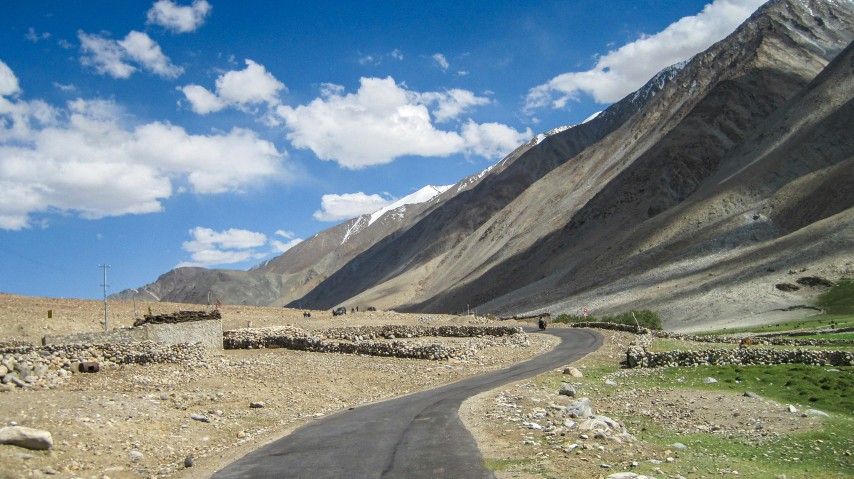
Imagine this: You’re standing by a shimmering blue lake at 14,000 feet, snow-capped peaks all around, prayer flags fluttering in the breeze, and not a single honk or email in sight. That’s Ladakh for you. If this high-altitude dream has been on your bucket list for a while, it’s time to stop scrolling and start planning. Whether you’re chasing roads less traveled, dreaming of a romantic getaway, or plotting the ultimate road trip with friends, this guide to the perfect Leh Ladakh trip package has you covered. Let’s break it down: what to see, what to do, and what to book to make this trip unforgettable. Places That Belong on Your Ladakh Hitlist Leh Town Why Visit: This is the heart of Ladakh—a high-altitude town surrounded by the Himalayas. It’s where culture, history, and comfort meet. Attractions: Shanti Stupa, Leh Palace, Namgyal Tsemo Monastery, vibrant local bazaars, and Tibetan cafés. Pro Tip: Spend at least 2 days in Leh to acclimatize before heading to higher-altitude regions. Nubra Valley Why Visit: A high-altitude desert nestled between mountains, known for sand dunes and double-humped camels. Attractions: Diskit Monastery, Hunder Sand Dunes, Turtuk Village (a cultural gem near the Indo-Pak border). Pro Tip: Visit Turtuk for a unique cultural experience, and stay in a Nubra homestay for a local touch. Pangong Lake Why Visit: India’s most iconic high-altitude lake, famous for its surreal blue shades. Attractions: Camping by the lake, sunrise photography, and stargazing. Pro Tip: There’s no mobile network here—download offline maps and carry power backups. Tso Moriri Why Visit: A more peaceful and less touristy alternative to Pangong is Tso Moriri, ideal for meditation and nature lovers. Attractions: Bird watching, Karzok village, and raw natural beauty. Pro Tip: Visit this last on your itinerary, as it’s one of the highest points and requires full acclimatization. Magnetic Hill & Gurudwara Pathar Sahib Why Visit: A quirky stop where vehicles appear to roll uphill. The Gurudwara offers peace and hot tea. Attractions: Magnetic illusion, confluence of Zanskar & Indus rivers. Pro Tip: Combine this with Alchi Monastery or Lamayuru on a short half-day trip from Leh. Hemis & Thiksey Monasteries Why Visit: These monasteries showcase Ladakh’s rich spiritual life, architecture, and Himalayan rituals. Attractions: Giant Maitreya Buddha at Thiksey, Hemis Festival (if visiting in June/July), morning chants. Pro Tip: Visit Thiksey at sunrise for incredible light and fewer tourists. Must-Do Experiences That Make It All Worth It Road Tripping on the World’s Highest Highways Trust us—nothing compares to riding through Ladakh with the wind in your hair and the majestic Himalayas unfolding before you. Whether you’re traveling solo or with a group, this is one adventure that absolutely deserves a spot on your bucket list. Stargazing Like Never Before In Ladakh, the stars don’t twinkle; they dazzle. Pangong, Hanle, and Tso Moriri offer skies so clear, you’ll forget the city even exists. Monastery Mornings Wake up early, sip butter tea, and watch monks chant in candlelight. It’s peace you can feel. Camp By the Lake A blanket of stars, a hot cup of Maggi, and the gentle sound of waves while camping by Pangong or Tso Moriri are the stuff dreams are made of. Acclimatization & Altitude Sickness: What to Know Stay 48 hours in Leh before heading to higher altitudes. Hydrate constantly—3–4 liters per day. Avoid alcohol and heavy meals the first few days. Watch for AMS symptoms like dizziness and nausea. Carry Diamox (after consulting a doctor) or use oxygen cylinders if needed. Packing Essentials for Ladakh Thermal wear, fleece layers, and down jackets Sunglasses, SPF 50+ sunscreen, lip balm Sturdy trekking shoes Reusable water bottle, energy bars Power bank and offline maps Copies of permits and ID proofs What Should Your Leh Ladakh Package Really Include? Let’s be honest: booking a trip to Ladakh isn’t just about ticking boxes; it’s about making sure you’re comfortable, safe, and actually enjoying every moment. Here’s what to look for before you hit that Book Now button: A Good Place to Crash After a long day of road tripping and sightseeing, you’ll want a cozy bed, not a sleeping bag in the cold. Look for clean, comfy hotels in Leh and lakeside camps in Nubra or Pangong with proper bedding and warm food. Reliable Wheels Ladakh’s roads can get rough (we’re talking mountain passes and hairpin bends), so SUVs like a Scorpio or Innova are the way to go. Bonus points if the driver’s a local; they know the terrain like the back of their hand. Meals Sorted Most good packages include breakfast and dinner, and trust us, you’ll want that sorted when you’re at 14,000 feet and the nearest café is 50 km away. Plus, who doesn’t love hot Maggi or butter tea after a long drive? Oxygen on Standby The altitude can sneak up on you, especially in the first couple of days. Packages that include oxygen support or emergency protocols are always a smart pick. Better safe than breathless. A Bit of Wiggle Room The best kind of travel? The kind that doesn’t feel rushed. Go for a customizable itinerary, one that lets you explore at your pace, maybe squeeze in a monastery you just heard about, or stay an extra night by the lake. Leh Ladakh Itinerary: 7-Day Travel Plan Day 1: Arrive in Leh, rest, and light exploration (Shanti Stupa, market) Day 2: Leh sightseeing—Hall of Fame, Leh Palace, monasteries Day 3: Drive to Nubra via Khardung La, explore Diskit & Hunder Day 4: Visit Turtuk or enjoy sand dunes & monastery visit Day 5: Drive to Pangong Lake via Shyok route, overnight camp Day 6: Return to Leh via Chang La; stop at Hemis Monastery Day 7: Local shopping or visit Magnetic Hill & Pathar Sahib before departure FAQs About Leh Ladakh 2025 1. Do I need any permits to visit Leh Ladakh in 2025? Yes, Inner Line Permits (ILPs) are required for Indian citizens and Protected Area Permits (PAPs) for foreign nationals. These are needed for areas like
Top 8 Cheap Workation Places in India: Hidden Gems for Remote Work!!

Imagine sipping chai in the hills while replying to emails or wrapping up a presentation as waves crash outside your window. In India, this dream can be a reality without burning a hole in your pocket. Several hidden workation destinations along with Kasol and Jibhi provide similar charm combined with fewer tourists and a more relaxed environment. Let us explore these secluded retreats that unite business productivity with wandering exploration. Serene views for workation 1. Jibhi, Himachal Pradesh Jibhi rests within the Banjar Valley, where it sits quietly beside pine forests and houses built from wood. It’s a budget-friendly spot with good internet, perfect for a serene remote work experience. The cool climate and scenic views make working here feel like a retreat. This destination provides perfect conditions for people who desire connectivity while pursuing digital detoxification. Attractions: Jalori Pass, Chehni Kothi, and Shringa Rishi Temple. Things to Do: Hike to Serolsar Lake, nature walks, trout fishing, camping, bird watching. 2. Ziro Valley, Arunachal Pradesh Ziro Valley provides creative individuals with a calm environment of tribal society embedded within verdant scenery. The destination offers affordability together with its distant location, which allows you to disconnect while accessing limited internet services. The calm, foggy mornings are perfect for focused writing or thinking. You will experience comfortable accommodations in local hospitality, which provides affordable rates. Attractions: Apatani tribal villages, Dolo Mando Hill, and Pine Grove. Things to Do: Trekking, attending the Ziro Music Festival, birdwatching, cycling, and local cuisine tasting. 3. Panchgani, Maharashtra This hill town in the Western Ghats is less crowded but equally beautiful compared to Mahabaleshwar. You can enjoy cheap accommodation in family homes and strong cellular connections and serenity in the area to achieve quick relaxation. The place offers year-round favorable weather conditions that make it ideal for extended workation stays. The location connects easily to both Pune and Mumbai. Attractions: Table Land, Parsi Point, Sydney Point. Things to Do: Paragliding, horse riding, strawberry farm visits, heritage walks, and nature photography. 4. Gokarna, Karnataka Gokarna is a peaceful beach town offering affordable accommodation with Wi-Fi access. Unlike Goa, it has a laid-back vibe that’s perfect for long work stays. The location provides an environment that brings physical healing together with creativity. The town offers affordable costs while containing many natural landscapes. Attractions: Om Beach, Kudle Beach, Mahabaleshwar Temple, and Half Moon Beach. Things to Do: Beach yoga, hiking trails, cafe hopping, sunset walks, and surfing. 5. Majuli, Assam Majuli, a river island on the Brahmaputra, offers a unique cultural and scenic workation experience. The cost of living is low, and the environment is perfect for a digital detox workation experience. Little money is needed to survive because the environment supports digital detoxification processes. This place stands out due to its traditional arts along with nature-friendly living practices. Writers and creative professionals who want seclusion as a working environment will find this location suitable. Attractions: Vaishnavite Satras (monasteries), tribal villages, and Auniati Satra. Things to Do: Mask-making workshops, birdwatching, cycling, cultural exploration, pottery. 6. Tirthan Valley, Himachal Pradesh Tirthan is an untouched valley perfect for nature lovers and remote workers. The attractive cottages and tranquil environment in this location create an environment for intense focus and rest. The locations have reliable mobile coverage together with a few homestays that offer Wi-Fi to users. Visitors can enjoy relaxation by the riverbanks of this location. Attractions: Great Himalayan National Park, waterfalls, Raghupur Fort. Things to Do: Fishing, trekking, bonfires, local food tasting, riverside picnics. 7. Varkala, Kerala Varkala blends beach beauty with wellness, ideal for remote professionals seeking relaxation and work-life balance. The scenic seaside restaurants provide exceptional views together with reliable internet connection options for office tasks. Varkala unites serene beach appeal with sacred tranquility. Perfect for health-conscious travelers. Attractions: Varkala Beach, Papanasam Beach, Anjengo Fort, Sivagiri Mutt. Things to Do: Ayurvedic therapies, backwater boating, yoga, cliff walking, and temple visits. 8. Kasol, Himachal Pradesh Nestled in Parvati Valley, Kasol offers cheap hostels, great food, and a vibrant remote work community. The combination of peace and connectedness makes this location a popular choice for workation purposes. Tourists can find plenty of inexpensive lodgings that offer panoramic mountain vistas. The place serves as the starting point for multiple trekking routes. Attractions: Kheerganga, Manikaran, Tosh Village, and Parvati River. Things to Do: Riverside camping, hot springs visit, local market shopping, hiking, and bonfires. FREQUENTLY ASKED QUESTIONS (FAQs): Q1. Are these cheap workation places in India suitable for long-term stays? Yes, most spots offer affordable homestays, hostels, and guesthouses with stable internet and basic comforts, making them great for extended remote work periods. Q2. Which is the best workation destination in India with reliable internet connectivity? Jibhi, Varkala, and Kasol consistently provide good Wi-Fi or mobile network speeds, making them ideal for video calls, uploads, and regular work tasks. Q3. Is it safe for solo travelers to work remotely from these places? Yes, they are generally safe, especially for solo travelers, with friendly locals and a growing number of digital nomads and backpackers in the community. Q4. What’s the best season to go on a workation in India? Summer (March to June) is great for mountain escapes like Himachal, while winter (October to March) is ideal for coastal and southern destinations like Gokarna and Varkala. Q5. Do these places have mobile network coverage for hotspot tethering? Yes, most areas are well-covered by Jio, Airtel, and Vi, allowing easy mobile hotspot use if Wi-Fi is slow or unavailable. Final Thoughts! India’s diverse landscapes present excellent, affordable options for remote workers seeking productivity and peace. Whether it’s the mountains of the north or the coastal serenity down south, these destinations offer the right infrastructure and ambiance for an efficient workation. It’s time to rethink your workspace and embrace this flexible lifestyle. So pack your bags, bring your laptop, and head off to explore one of these cheap workation destinations in India. Looking for a hassle-free workation? Plan it with The Tarzan Way for personalized
THE MOST BEAUTIFUL LAKES IN UDAIPUR TO EXPLORE!!
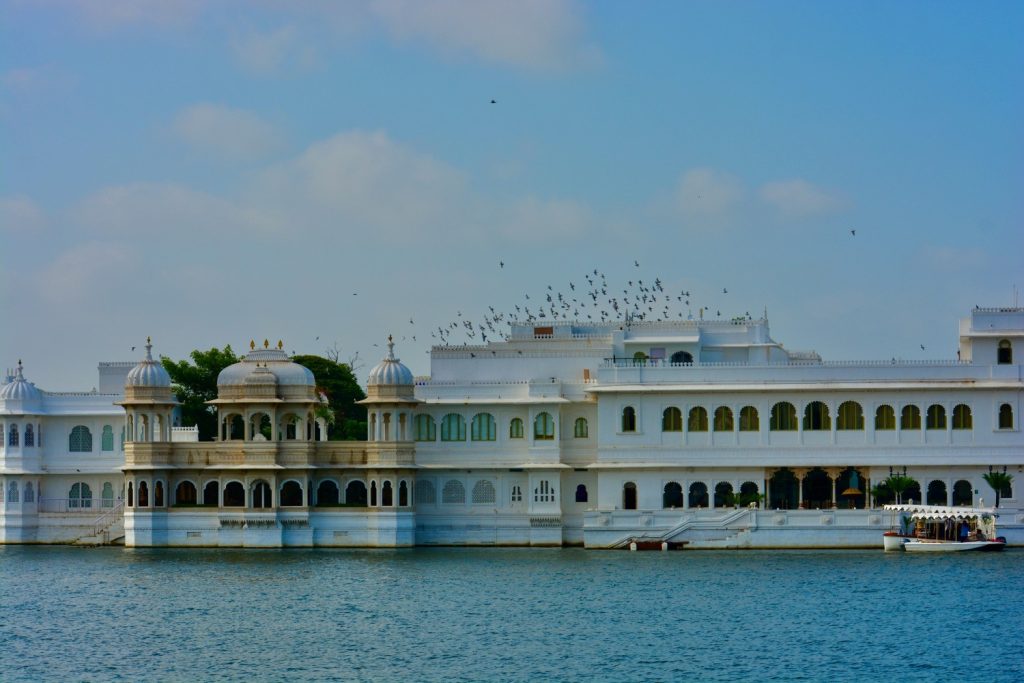
Udaipur, the City of Lakes, is not a city; it’s an experience. Hidden away in Rajasthan’s Aravalli hills, this enchanted land is famous for its beautiful lakes that enhance its royal aura. The sunset on Lake Pichola, a mesmerizing boat ride on Fateh Sagar Lake, or standing at the beauty of Badi Lake is something one cannot miss. The city’s lakes offer peaceful boat rides and breathtaking views. There are popular tourist attractions like the City Palace, Bagore ki Haveli, and Jain Mandir that lie within walking distance of each other. If you’re a tourist hunting for perfect spots, a romantic getaway couple, or just someone who adores nature, Udaipur is the perfect place for you. This guide will lead you through some of the most beautiful lakes in Udaipur. So, let’s dive into the charm of this beautiful city. 1. Lake Pichola: Royal jewel of Udaipur The most famous lake in Udaipur, Pichola Lake is surrounded by historic palaces, ghats, and heritage hotels. Pichola Lake was created in 1362 by a Banjara tribesman and later expanded by Maharana Udai Singh II when he established Udaipur. This lake is known for the stunning Lake Palace and Jag Mandir. Boat rides in Lake Pichola are a must for people who enjoy scenic views. ● Best Time to Visit: October to March. ● Activities: Boating, Photography, Sightseeing. ● Nearby Attractions: City Palace, Bagore Ki Haveli, Jag Mandir. 2. Fateh Sagar Lake: Second largest attraction Fateh Sagar Lake lies northwest of Lake Pichola, surrounded by hills and woodlands. It is known for its blue waters and lush surroundings. This is one of the most famous lakes, which consists of three islands, with Nehru Park being the top attraction. It is one of the must-visit lakes in Udaipur. ● Best Time to Visit: October to March. ● Activities: Photography, Boating. ● Nearby Attractions: Nehru Garden, Moti Magri. 3. Jaisamand Lake: Asia’s Second Largest Artificial Lake Jaisamand Lake, referred to as Dhebar Lake, is Asia’s second largest artificial lake, which offers breathtaking views. The lake is surrounded by marble-carved cenotaphs and palaces on all sides. It’s a perfect boating spot to capture the sunset when the lake turns golden and creates a picture-perfect moment. ● Best Time to Visit: October to March. ● Activities: Boating, Wildlife Exploration. ● Nearby Attractions: Jaisamand Wildlife Sanctuary, Hawa Mahal. 4. Udai Sagar Lake: A Heritage Gem Udai Sagar Lake, one of the major lakes of Udaipur, offers stunning views and a peaceful atmosphere away from the city’s hustle. Udai Sagar Lake looks serene during monsoons, when the region surrounding the lake looks fresh and greener. ● Best Time to Visit: August to March. ● Activities: Photography, birdwatching. ● Nearby Attractions: Udai Sagar Dam. 5. Badi Lake: The Hidden Bliss Badi Lake, also known as Jiyan Sagar, is one of Udaipur’s most underrated yet beautiful lakes. The lake is surrounded by a peaceful stone-laden walkway. It is a perfect spot for a picnic and getaway for nature lovers. ● Best Time to Visit: Monsoon and winter months. ● Activities: Trekking, Swimming, Photography. ● Nearby Attractions: Bahubali Hill. 6. Rajsamand Lake: A Celestial Lake Rajsamand Lake is a stunning artificial lake offering a peaceful environment and beautiful views. Sunrise is the perfect time to come here and see the beautiful scenery. The most majestic attraction of Rajsamand Lake is the nine marble ghats, also called ‘nav chawkis.’ ● Best Time to Visit: Monsoon and winter months ● Activities: Boating, Photography, Exploring Marble Ghats ● Nearby Attractions: Kankroli Temple, Dwarkadhish Temple, Haldi Ghati, and Chetak Samadhi. 7. Dudh Talai: Peaceful Escape Dudh Talai Lake is a small, pretty lake near Lake Pichola surrounded by lush gardens with a stunning sunset view. It is perfect for a peaceful escape in the heart of the city. At the Dudh Talai Lake, visitors can soak in scenic views of Lake Pichola, Lake Palace, and Jag Mandir. ● Best Time to Visit: Monsoon and winter months ● Activities: Boating, photography, sunset viewing, and ropeway ride. ● Nearby Attractions: Manikya Lal Verma Garden, Karni Mata Temple, Lake Pichola. 8. Swaroop Sagar Lake: Soothing Retreat Swaroop Sagar Lake is a small, cozy lake that serves as a link between Lake Pichola and Fateh Sagar Lake. It gives peaceful views, less crowded surroundings, and is an excellent picnic spot. It is a perfect spot to enjoy a cozy and romantic boat ride. ● Best Time to Visit: Monsoon and winter. ● Activities: Boating, Photography, Sightseeing. ● Nearby Attractions: Lake Pichola, Fateh Sagar Lake, Gangaur Ghat, Bagore Ki Haveli. Boat rides and timings: Boat rides on Lake Pichola run from 9 AM to 5 PM daily. Sunset cruises come with premium rates. Here’s what you’ll pay: ● Regular boat rides: Rs. 400 for adults, Rs. 200 for children. ● Sunset cruises: Rs. 700 for adults, Rs. 400 for children. ● Motorboats: Rs. 200 for adults, Rs. 100 for children. Boat rides on Fateh Sagar Lake run from 8 AM to 4:30 PM daily. It has budget-friendly options. Here’s what you’ll pay: ● Regular boat rides: Rs. 15 to 30. ● Motor Boats: Rs. 100 to 200. ● Speed Motorboats: Rs. 200 to 400. Frequently Asked Questions: Q1. Which is the most beautiful lake in Udaipur? Lake Pichola is widely considered the most beautiful lake in Udaipur. It has four islands, including Jag Niwas, the Lake Palace, and offers stunning views of the City Palace and surrounding architecture. Q2. Best lake for boating in Udaipur? Both Lake Pichola and Fateh Sagar Lake are great for boating. Lake Pichola is known for its scenic views of palaces and architecture, while Fateh Sagar Lake has a more serene view of nature. Q3. What is the best time to visit Udaipur’s lakes? The best time to visit Udaipur’s lakes is during sunrise and sunset. Early mornings at Gangaur Ghat over serene views of Lake Pichola, while evenings at Ambrai Ghat over spectacular sunset views. Q4. Are there any hidden gem
Rajasthan: Beyond the Deserts – Wildlife Adventures Unveiled
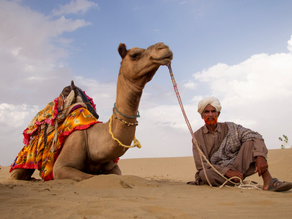
Rajasthan: Beyond the Deserts – Rajasthan is not merely a state of royal palaces and endless golden deserts – it is also the heaven of the wildlife lovers and the adventurers. Pulsating so much in a bid to preach a rare mixture of Rajasthan tourism and clean nature about the traditions, the wilderness adventure in the state. From spotting the majestic Bengal tigers of Ranthambore to witnessing flocks of migratory birds at Keoladeo National Park, this Rajasthan travel guide will take you through the state’s wild side. Whether you’re planning a family trip, a honeymoon, or looking for the best Rajasthan tour packages, this guide will help you create the perfect itinerary and show you the true essence of Rajasthan: Beyond the Deserts for an unforgettable journey. Rajasthan Ranthambore National Park: Home of the Bengal Tigers Ranthambore National Park No Rajasthan trip itinerary is complete without visiting Ranthambore National Park, one of India’s most famous wildlife sanctuaries. It is a home to photographers, nature lovers, and wildlife lovers due to its wild animals, especially Bengal tigers, all of which can be found in this very park. Tigers aside, other types of wildlife you’ll spot include leopards, sloth bears, striped hyenas, wild boars, and marsh crocodiles. The rough park terrain, comprising forest and open lawns, has rendered the park ideal for thrilling jeep safaris. Inclusion of Ranthambore in your Rajasthan tour itinerary would make sure that you get in touch with the wild core of Rajasthan. Ranthambore: Home to diverse wildlife Keoladeo National Park: A Birdwatcher’s Paradise Also known as the Bharatpur Bird Sanctuary, the Keoladeo National Park is a UNESCO World Heritage Site and a must-visit destination for bird enthusiasts. This sanctuary is one of the best places in Rajasthan to witness diverse birdlife in their natural habitat. Migratory birds like Siberian cranes, painted storks, pelicans, and kingfishers flock to this wetland during the winter months, giving it a spectacular view. Mist floating over lakes, a hundred birds screaming, that is the ha-ha of early mornings here. Keoladeo should be part of your Rajasthan tour packages, as it will provide you with an opportunity to relax in nature and a different cultural experience. Bharatpur Bird Sanctuary Bharatpur Bird Sanctuary The most interesting thing about this sanctuary is the amazing range of migratory birds that come in the winter. It is a great place to observe colorful birds, such as rare Siberian cranes, giant pelicans, colorful painted storks, and colorful Kingfishers. You will be engulfed by the sounds of the singing birds and the tranquility of the wetlands as you walk or ride through the well-kept walkways. The photojournalists and lovers of nature found particular beauty in the early mornings, when the mist hovered over the wetlands and flocks of birds started flying above them in perfect sync. You will never forget just how much of a great experience it can be, whether you are an old birder or just simply need a day of taking your feet up and experiencing the natural heritage of the Rajasthan state and the natural biodiversity of the Keoladeo National Park. Sariska Tiger Reserve: Revived Habitat for Tigers Another destination for wildlife lovers not to be missed is the Sariska Tiger Reserve, which is located in the Alwar district. Sariska is renowned for its Bengal tigers, leopards, sambar deer, and chinkaras, and its dry deciduous forests provide an exciting jeep safari experience. At a prominent point here is the historic Kankwari Fort inside the reserve. It is to give you a moneying of history when you come to a kingdom of savage things, which is the very mix of tradition and nature. Sariska represents a compromise between adventure and civilization to the tourist planning a custom-made Rajasthan travel brochure. Sariska Tiger Reserve, Alwar Desert National Park: A Unique Ecosystem Few would have a chance to observe the incredible wildlife in the arid landscapes of Rajasthan, as it is in the Desert National Park, which is near Jaisalmer. The largest area of its kind is the giant arcs of the dunes of dust, the cones of rock, and the ancient salt lakes, and in this respect, it has become one of the most popular tourist destinations for lovers of nature, and it is also known for its exciting elements. The endangered Great Indian Bustard is one of the largest attractions within the park and a beautiful bird due to its conspicuous appearance and towering stature. And it is about this endangered species that conservation becomes a frontier area for Rajasthan, and a kind of tourism for bird watchers of the world. The visit to the Desert National Park is an adventure in itself. You can enjoy a fun-filled jeep safari through the dunes, or you can go on a guided walking tour, where a local guide and naturalist can tell you all about the history and biodiversity of the desert. Surreal quality of the wildlife photography and lifetime memories is created by the dramatic nature of the scenery, especially around sunset or sunrise. Desert National Park & The Great Indian Bustard The endangered Great Indian Bustard is one of the largest attractions within the park and a beautiful bird due to its conspicuous appearance and towering stature. And it is about this endangered species that conservation becomes a frontier area for Rajasthan, and a kind of tourism for bird watchers of the world. The visit to the Desert National Park is an adventure in itself. You can enjoy a fun-filled jeep safari through the dunes, or you can go on a guided walking tour, where a local guide and naturalist can tell you all about the history and biodiversity of the desert. Surreal quality of the wildlife photography and lifetime memories is created by the dramatic nature of the scenery, especially around sunset or sunrise. Tal Chhapar Sanctuary: Blackbuck Haven Tal Chhapar Sanctuary, The BlackBuck reserve Another wildlife paradise, which promises a unique experience within untrodden wildlife paths, is Tal Chhapar



